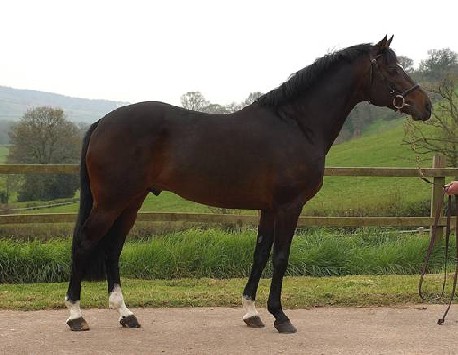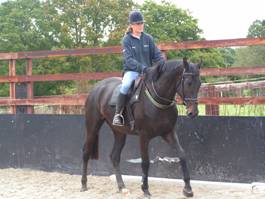brown horses





Some aspects of colour are uncertain, this includes the genetics of brown horses. They’re not exactly black, they’re not bay.
Some horses are more or less uniformly brown. Some of these are due to the action of dilution alleles, such as champagne, on an otherwise black coat. I’ve seen a beautiful chocolaty brown coloured warm blood that tested black, with non of the dilution genes for which there’s currently a test. This could be black with an unknown dilution gene, or it could be that it has a variant agouti allele.
the genetics of brown horses according to the Gower modelIt is now known that seal brown is due to the At allele at the agouti locus. This allele has been sequenced and there is now a test for it. This is further evidence that the following theory is correct, certainly it shows that Gower, and others, were correct in anticipating a brown agouti allele.
Brown horses must have at least one E+ allele at the extension locus (i.e. they are of genotype E+E+, E+e or E+ea at this locus). This allele causes the production of the black eumelanin pigment that occurs in black, brown and bay horses, and the colors derived from them (e.g. buckskin).
The A or agouti locus controls the distribution of black pigment in horses with at least one E+ allele: whether it occurs evenly throughout the body, as in true black horses, or only in certain parts, as in brown and bay horses. Brown horses are of genotypes AtAt or AtAa at this locus.
The At allele obviously causes less restriction of black pigment than the bay alleles of the agouti locus. However we know that brown is genetically distinct from bay since breeding brown horses together only ever results in brown or black foals, and not bay ones.
A summary of the effects of the A series on black is shown below. Some genotypes are shown using an underscore, e.g. AA_. This represents where an allele can either be the same as the allele shown (i.e. AA in the example) or any other allele recessive to it (i.e. either At or Aa in the example, but not A+ which is dominant to AA).
The agouti locus reduces eumelanin (black pigment) production in brown horses, probably due to the gene only being operative (“switched-on”) in certain parts. Different alleles of the agouti locus are responsible for different forms of phaeomelanin (red/ brown pigment).
link to information on breeding brown horses
|
|









